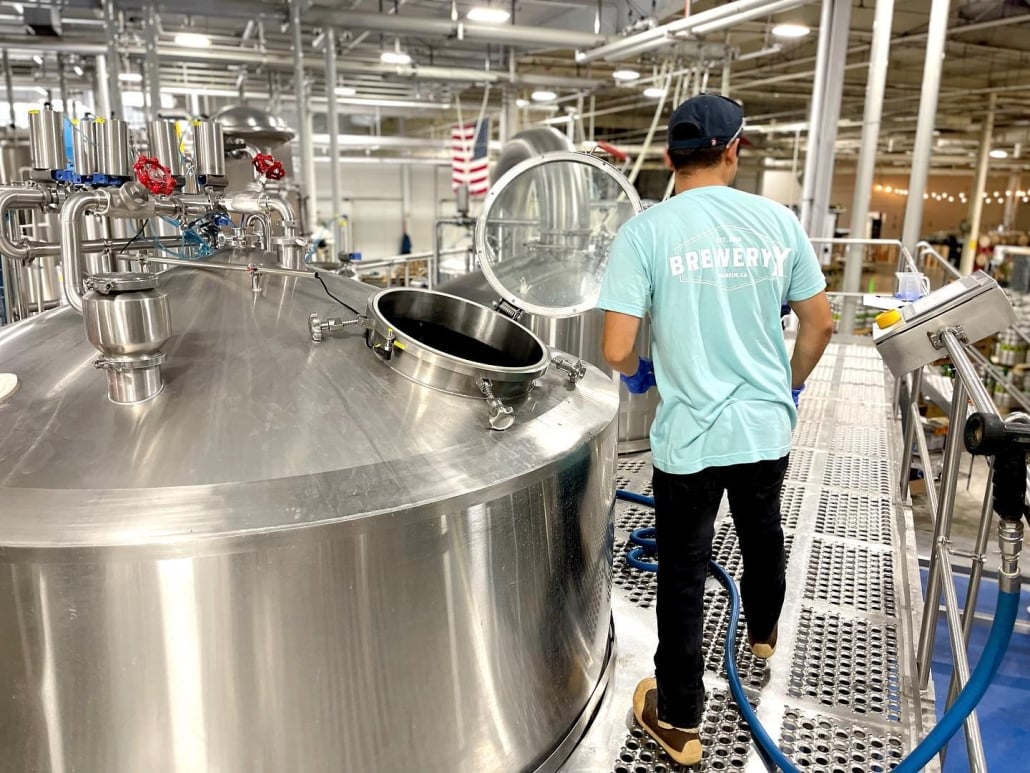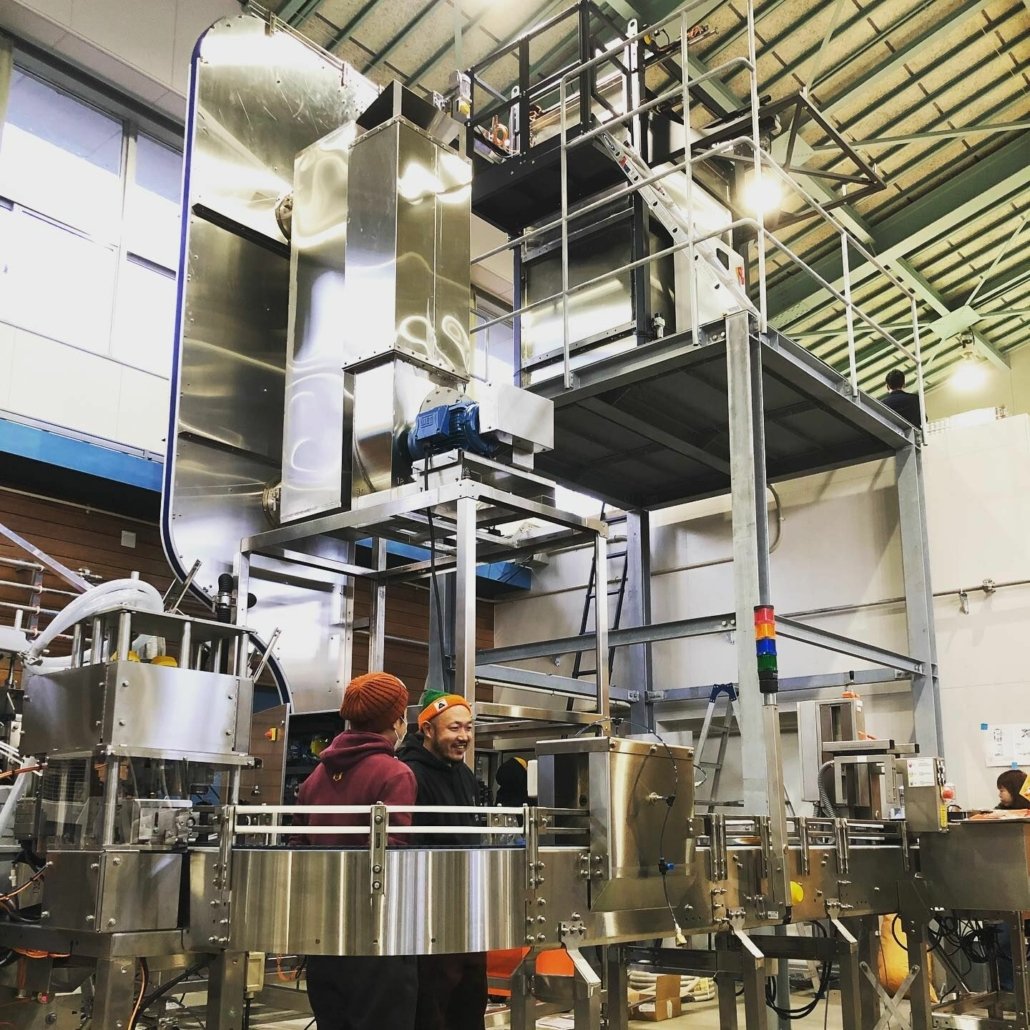The Equipment Guide: Understanding Fermenter Tanks
Overview of Fermenter Tanks
Fermenter tanks, also known as fermentation vessels, are integral to the brewing process. These tanks are where the magic happens, converting sugars into alcohol through fermentation. But what’s so special about them? Why are they crucial for brewers, both amateur and professional? Let’s dive deep into the world of fermenter tanks, exploring everything from their design to their role in the brewing process.
Fermenter tanks come in various shapes, sizes, and materials. They are designed to create the ideal environment for yeast to convert sugars into alcohol. Here’s what you need to know about the different types of fermenter tanks available:

Types of Fermenter Tanks
| Type | Description |
|---|---|
| Conical Fermenters | These tanks are cone-shaped at the bottom, allowing easy removal of sediment and yeast. They are preferred for their efficiency and ease of use. |
| Cylindrical Fermenters | Straight-sided tanks that are simple and often more affordable than conical fermenters. They are common in both homebrewing and commercial brewing setups. |
| Unitanks | Multifunctional tanks that can handle fermentation, conditioning, and aging processes in one vessel. This versatility makes them popular in breweries. |
| Open Fermenters | Traditional tanks without a cover, often used in brewing styles that benefit from exposure to air, like some Belgian and German beers. |
| Horizontal Fermenters | Tanks lying on their side, often used for lagering. They provide a larger surface area for yeast to interact with the wort, which can affect flavor and carbonation. |
The Brewing Process: Step-by-Step with Fermenter Tanks
Understanding the brewing process is essential to appreciate the role of fermenter tanks. Here’s a detailed look at how these tanks fit into the brewing journey:
- Mashing: The brewing process begins with mashing, where malted grains are mixed with hot water to extract fermentable sugars.
- Boiling: The wort (sugar-rich liquid) is then boiled and hops are added for bitterness, flavor, and aroma.
- Cooling: After boiling, the wort is rapidly cooled to a temperature suitable for fermentation.
- Fermentation: The cooled wort is transferred to the fermenter tank, where yeast is added. The yeast consumes the sugars, producing alcohol and carbon dioxide.
- Conditioning: After primary fermentation, the beer is conditioned, often in the same tank, to develop flavors and carbonation.
- Packaging: Finally, the beer is packaged into bottles, cans, or kegs for distribution and consumption.
Detailed Comparison of Fermenter Tank Capacities, Spaces, Design, and Customization
Choosing the right fermenter tank depends on various factors including capacity, space availability, design preferences, and customization needs. Here’s a detailed comparison:
| Aspect | Details |
|---|---|
| Capacity | Fermenter tanks range from small 5-gallon homebrew tanks to massive 100-barrel commercial tanks. The choice depends on the scale of brewing operations. |
| Space Requirements | Smaller tanks fit well in homebrewing setups, while larger commercial tanks require significant space and often a dedicated brewing area. |
| Design | Conical designs are favored for their ease of cleaning and yeast collection, while cylindrical tanks are often more affordable. The design choice affects brewing efficiency. |
| Customization | Many manufacturers offer customizable features like cooling jackets, sampling ports, and pressure relief valves to suit specific brewing needs. Customization enhances versatility. |
Suppliers and Price Range for Fermenter Tanks
Knowing where to buy your fermenter tanks and understanding the price range is crucial for budgeting. Here’s a table detailing some popular suppliers and their price ranges:
| Supplier | Price Range | Additional Features |
|---|---|---|
| Blichmann Engineering | $500 – $3,000 | Offers a range of sizes, with features like thermowells, racking arms, and sanitary fittings. |
| Ss Brewtech | $200 – $5,000 | Known for high-quality stainless steel tanks with options for conical fermenters, unitanks, and brew buckets. |
| Spike Brewing | $300 – $4,000 | Provides customizable fermenter tanks with options for various fittings and accessories. Ideal for homebrewers and small breweries. |
| MoreBeer | $100 – $2,000 | Wide selection of fermenters, including plastic, stainless steel, and conical designs. They offer affordable options for beginners and intermediate brewers. |
| BrewBuilt | $600 – $3,500 | Specializes in robust and durable fermenter tanks, with features designed for easy cleaning and maintenance. |
Installation, Operation, and Maintenance of Fermenter Tanks
Proper installation, operation, and maintenance are vital to ensure the longevity and efficiency of fermenter tanks. Here’s a breakdown:
| Aspect | Details |
|---|---|
| Installation | Ensure tanks are placed on a level surface and secure all connections, including cooling and heating systems if applicable. Follow manufacturer guidelines for setup. |
| Operation | Monitor temperature and pressure regularly. Use appropriate cleaning agents to sanitize the tank before and after each batch. Maintain proper yeast management practices. |
| Maintenance | Regularly inspect seals and fittings for wear and tear. Perform routine deep cleaning and sanitization. Check for any signs of corrosion or damage to maintain tank integrity. |
How to Choose the Right Fermenter Tank Supplier
Selecting a supplier involves considering various factors to ensure you get the best product for your needs. Here’s a detailed comparison of key considerations:
| Factor | Details |
|---|---|
| Reputation | Look for suppliers with positive reviews and a strong reputation in the brewing community. Check online forums and customer testimonials for insights. |
| Quality | Assess the materials and craftsmanship. Stainless steel is preferred for its durability and ease of cleaning. Ensure tanks meet industry standards. |
| Customization Options | Evaluate the range of customization options available. A good supplier should offer features that match your specific brewing requirements. |
| Customer Support | Excellent customer support is crucial for resolving any issues quickly. Choose suppliers known for responsive and helpful customer service. |
| Warranty and Guarantees | Ensure the supplier offers warranties and guarantees on their products. This provides assurance on the investment and helps cover any manufacturing defects. |
Advantages and Limitations of Different Fermenter Tanks
Every type of fermenter tank comes with its own set of pros and cons. Here’s a comparison to help you make an informed decision:
| Type | Advantages | Limitations |
|---|---|---|
| Conical Fermenters | Easy yeast removal, efficient fermentation process, and easy to clean. | Higher initial cost compared to cylindrical fermenters. |
| Cylindrical Fermenters | More affordable, simple design, and widely available. | Less efficient yeast separation, can be harder to clean. |
| Unitanks | Versatile (handles fermentation, conditioning, and aging), saves space and money on additional tanks. | Can be more expensive due to multifunctionality. |
| Open Fermenters | Suitable for certain brewing styles, allows for unique flavor development. | Increased risk of contamination, requires more careful monitoring. |
| Horizontal Fermenters | Ideal for lagering, provides larger yeast-wort interaction surface area. | Requires more space due to horizontal orientation, less common and may be harder to find. |

FAQ
What are fermenter tanks used for?
Fermenter tanks are used to convert sugars in wort into alcohol and carbon dioxide through the process of fermentation. They are essential for brewing beer, wine, and other alcoholic beverages.
What types of fermenter tanks are available?
There are several types, including conical fermenters, cylindrical fermenters, unitanks, open fermenters, and horizontal fermenters. Each type has its own advantages and is suited to different brewing needs.
How do I choose the right fermenter tank?
Consider factors like the scale of your brewing operations, space availability, budget, and specific brewing requirements. Look for reputable suppliers who offer high-quality, customizable tanks.
What materials are fermenter tanks made from?
Most high-quality fermenter tanks are made from stainless steel due to its durability, ease of cleaning, and resistance to corrosion. Plastic and glass fermenters are also available but are less common in commercial brewing.
How do I maintain a fermenter tank?
Regular cleaning and sanitization are crucial. Inspect seals and fittings for wear and tear, and check for any signs of corrosion. Follow the manufacturer’s guidelines for maintenance to ensure the tank’s longevity and performance.
Share this entry
Interested in learning more about Brewing Systems including additional details and pricing information? Please use the form below to contact us!
YOLONG BREWERY EQUIPMENT FAQS
- Commercial Brewery / Craft Brewery / Microbrewery / Nanobrewery
- What is The Difference Between Craft Beer and Industrial Beer?
- The Bespoke Differences In Custom Brewing Systems
- Everything You Need to Know About Kettle Souring
- How to Choose Brewing Equipment for Your business?
- How To Choose The-Best Partner To Build Your Commercial Microbrewing System?
- Two Detection Sensors That You Need To Use In Your Brewhouse System
- Remote Control Applications in Brewing Equipment/How does it work?
- How To Clean Your Brand New Brewery Tanks?

